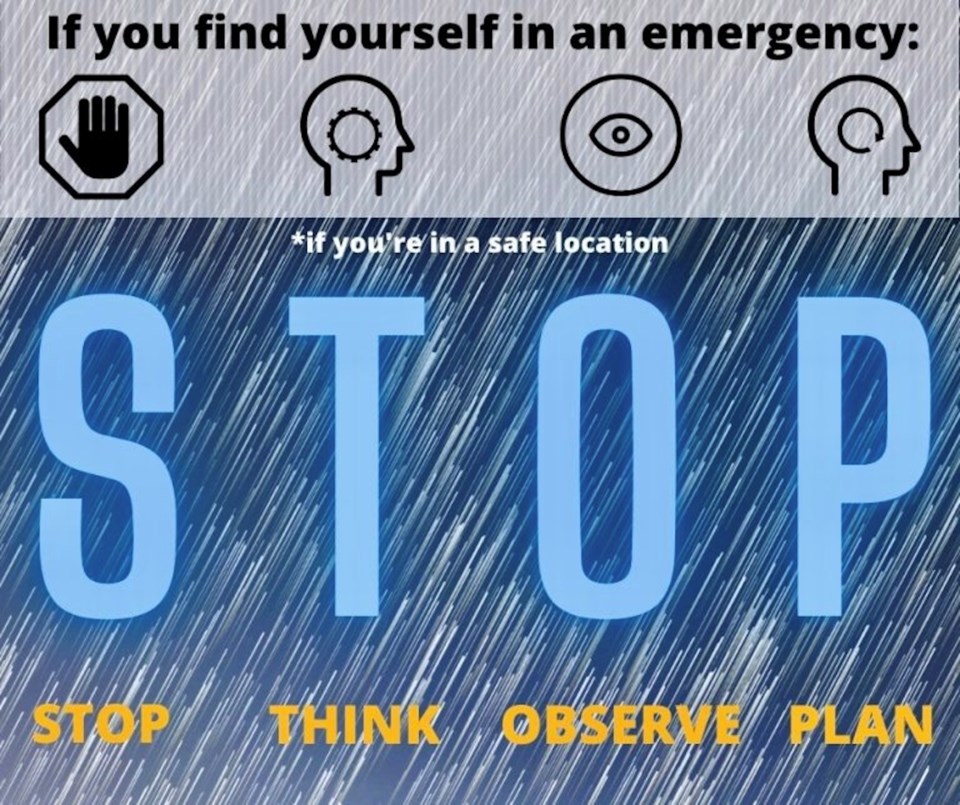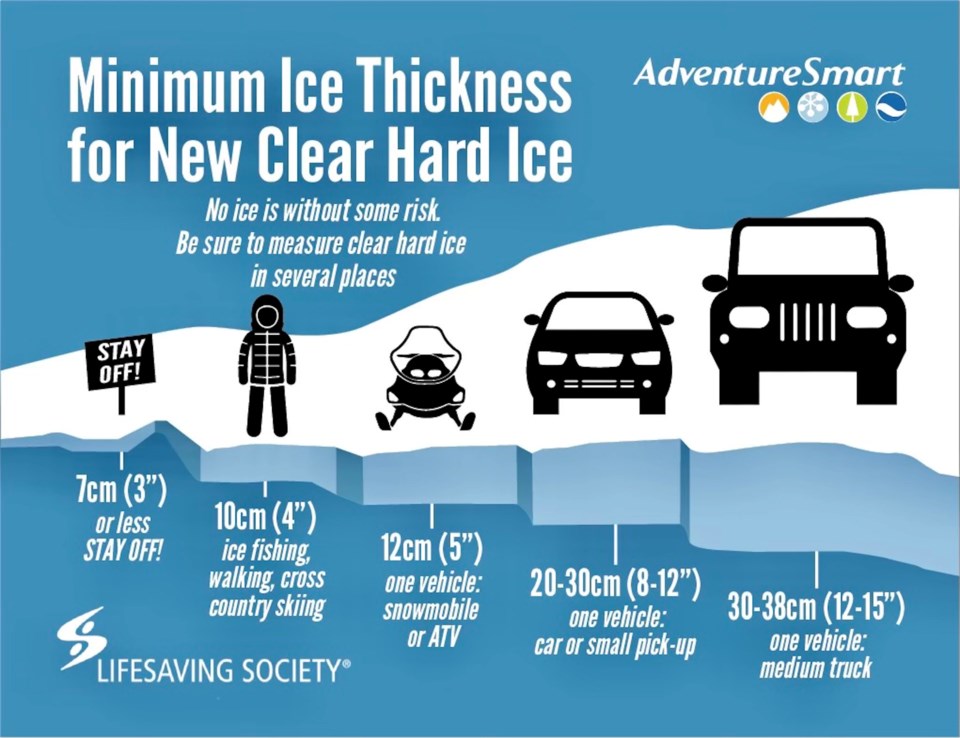And usually, we can.
But temperatures like we are seeing this week — it was -15 C at Squamish Airport Dec. 28, are colder than we are used to.
So how can we stay safe when the mercury drops?
Sandra Riches, executive director of says the Three Ts that are useful any time of the year are key to safe winter outings as well.
The are: File a trip plan; be trained for the activity you are heading out to do, and take the essentials.
With a trip plan, tell someone where exactly you are going and when you intend to be back.
On top of this, there are cold considerations when it’s frosty out.
"We need to think and be aware of cold weather injuries, like frostbite, frostnip, hypothermia, cold water immersion and just slipping and falling. And these temperatures can really affect our decisions," Riches said.
What to wear?
Some of us may not have the right outerwear for these temperatures and we also need to think about that as we head out.
Riches said cotton is a no-go.
"The three-layer system works in all temperatures and the right type of gear is critical. So, we're definitely not wearing cotton in this type of weather in any activity that we do outside because if it gets wet, it stays wet," she said.
She suggested Rena wools or polypropylene items as a base layer.
"When those base layers in that synthetic material are fitted to you, it actually wicks away any moisture that you might create from sweating and overheating, which we're trying to avoid. We're trying to not overheat because we don't want to get wet," she said.
The mid-layer should be synthetic, such as fleece or the puffy jackets so popular in town.
A quality wool sweater is also that good mid-layer, she added.
"So, now you're starting to create some thermal and some heat between you, and then the outer layer is protective," she said. "Which is our Gore-tex, ideally, if we can, and a protective layer from wind, snow and sleet."
Proper winter boots, too, are also essential.
Sometimes, Riches noted, when the weather is extreme, the best decision may be to stay home.
"When things are extreme, sound judgment is our best tool and saving it for another day is really one of the best decisions that could be," she said.
In the Sea to Sky, the desire to go out and explore, especially on a day off, is strong, but she noted folks also have to consider not only their own health and safety but that of the 3,000 search and rescue volunteers in С����Ƶ
"In the province, there are 79 search and rescue groups that respond to 1,900 search and rescue calls every year and that's more than anywhere else in the country. In the corridor is one of the higher call volume areas," she said.
So pulling back and doing less — shorter hikes, for example — or not going at all may be the best bet when the temperatures are too low, or high, like during the heat dome.

If you get into trouble
When folks find themselves out too far, lost or hurt, the best thing to do is use the principles of — stop, think, observe and plan, and then act, Riches said, noting AdventureSmart teaches kids to " in the woods.
"You will be found faster if you stop moving," Riches said.
"People are often drawn to gullies and creeks and ravines — natural draws that head down — and they think that's going to help them get somewhere safe. More often than not, if not every time, it puts them in more danger. It creates a more difficult scenario and situation for you as the subject and for search and rescue," she said.
So stop and stay where you are when you realize you are in trouble.
Next, think.
"OK, how am I going to communicate with search and rescue?"
With a trip plan, once in trouble, you will know that soon your contact will know something is up.
In addition to your phone, if you have your emergency device, like InReach or other satellite communication tools, that can be activated to let rescuers know where you are and what you need.
(AdventureSmart reminds folks that three of anything is the universal distress call: three blows on a whistle, three fires, etc.)
Next, observe that you aren't in any immediate danger where you are, say from an avalanche or cornice overhead. Also, observe ways that will help rescuers see where you are.
Are there any injuries that need to be attended to?
Next, plan how you will wait out the average of eight hours for rescuers to arrive.
"Most calls come in late in the day, close to sunset, and so tack on eight hours on top of that," Riches said.
Going out in a group of three — rather than two or alone — is recommended, Riches said.
"Let's say you, and I and another friend are snowshoeing, and we get caught, and I break my ankle. Three [people] allows the other person who has first aid to apply it to me. And the other person, the third person, let's say they're in charge of communication — they are making that call to help, they're calling 911," she said, adding it is never a good idea to separate from your group. Stay together.

On thin ice?
For the first time in a while, it may soon be possible to venture out onto the ice of local lakes, but not so fast, says Riches.
Check the ice thickness for the activity you want to do.
Less than seven centimetres, stay off the ice.
At 10 cm, it is safe for walking or cross country skiing.
The ice has to be 12 cm thick to hold a snowmobile.
Before you head out, look at a ruler and measure that against your arm or fingers so you can check the ice when you get there.
Look into self-rescue from ice should someone go in while you are out.
If you break through the ice AdventureSmart advises you:
- Do not panic. Your clothing will trap air and keep you buoyant.
- Turn towards the direction you came from and place your hands and arms flat on the unbroken surface.
- Kick your feet and try to push yourself up on top of the unbroken ice on your stomach, like a seal.
- Once you are lying on the ice, don’t stand up. Roll away from the break until you are on solid ice.
If someone else breaks through:
- Stay calm and think out a solution.
- Don’t run up to the hole. You might break through and then you’ll both need help.
- Use an item to throw or extend to your friend to pull them out of the water – if you don’t have a rope, improvise with items such as jumper cables, skis, etc.
- If you can’t rescue the other person immediately, call 911 on a cell phone
AdventureSmart runs regular winter webinars about the effects of weather, cold water effects, snow safety and other winter adventure information. Check out the website, and pages and for more information.



